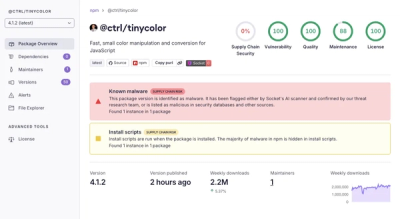Declarative z-indexes (declarative-z-indexes)
Prevent z-index conflicts by generating them from declarative constraints
Have you ever struggled with exponential z-index wars? Have you ever changed a
z-index only to find that you now need to change several others? Then
declarative z-indexes are for you.
Instead of writing each z-index separately, you write out all of the different
relationships between your z-index layers. Then, suitable z-indexes are
generated for each of the layers. Easy as pie!
Table of Contents
Background
The idea for this library originally came from UIKit's Auto Layout constraints.
Install
Install using npm:
npm install declarative-z-indexes
Usage
First, create a solver using the exported LayerSolver class
const solver = new LayerSolver();
Then, create some layers to be solved for
const body = solver.addLayer("body");
const header = solver.addLayer("header");
const modal = solver.addLayer("modal");
Add constraints between your layers
header.isAbove(body);
modal.isAbove(body);
modal.isAbove(header);
And finally, generate your z-indexes!
const solution = solver.solve();
Note: Don't depend on the actual z-index values that are produced! The
generated z-indexes will always satisfy the constraints but the literal values
might change in future versions of this library. For instance, in the future
solver.solve() might return something else like {body: 100, header: 150, modal: 200}
if the generating algorithm is changed.
Use the generated z-indexes in inline styles
<body>
<header style={{ position: "absolute", zIndex: solution.header }}>
</header>
<article style={{ zIndex: solution.body }}>
</article>
</body>
API
LayerSolver
LayerSolver is the default export of declarative-z-indexes.
-
addLayer(name: string): Layer
The addLayer method returns a new dynamic layer to be solved for. The same
name cannot be reused for multiple layers.
-
addStaticLayer(name: string, index: number): Layer
The addStaticLayer method returns a new static layer. Static layers have a
static z-index that will be used when solving the constraints for the
dynamic layers.
Example uses cases for static layers might be external library z-indexes
that cannot be modified.
const solver = new LayerSolver();
const modal = solver.addStaticLayer('bootstrapModal', 1000);
const modalDecoration = solver.addLayer('modalDecoration');
modalDecoration.isAbove(modal);
solver.solve();
(Note again: the resulting value of bootstrapModal will always be 1000,
but don't depend on modalDecoration being 1001! Its value will be above
1000 but the literal value might change in a future version of the
library)
-
solve(): {[layer: string]: number}
The solve method solves the current constraints on the dynamic layers and
returns a map-like object from each layer's name to the generated z-index
value.
solve is idempotent: every time you call it, solve generates a brand new
solution based on the constraints currently stored in the solver. It's safe
to call solve multiple times and even add new constraints between calls
without affecting past solutions.
Layer
A Layer is the object that is used to specify constraints in the system. It
is returned from a LayerSolver's addLayer and addStaticLayer methods.
-
isAbove(layer: Layer)
The isAbove method adds a constraint that the current layer should be
above the passed in layer.
-
isBelow(layer: Layer)
The isBelow method adds a constraint that the current layer should be
below the passed in layer.
Contribute
The initial design and API of this library is still being created! Once that is
done, we'll start taking contributions. Until then, hold tight!
License
MIT



